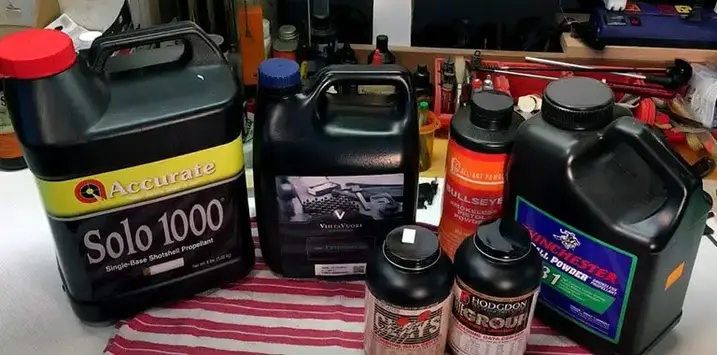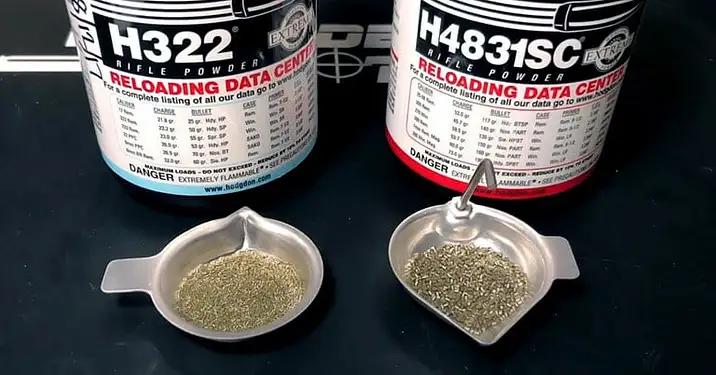Reloading is not a hard job. But reloaders who have just begun their journey should know some basic things. This basic knowledge helps them to make decisions easier. One of the basic questions is how to choose reloading powder.
Beginners usually do not have any idea about this. If you are new to reloading and don’t know how to choose reloading powder, then hopefully this article can guide you.
There are a few things a reloader should consider before purchasing the powder. The first thing is your firearm type. I meant the powder you would use must be according to your weapon type. Then Bullet weight is another thing to go on the list. And of course, loading capacity, powder quantity, and storage are other issues. You must be capable of properly storing the powder you pick.
Related Article:
These are the absolute basic yet essential to consider before picking reloading powder. This article is going to guide you by discussing these basic things. Besides, I will also discuss some other things related to choosing reloading powder.
How to Choose Reloading Powder

Early Era and Modern Era Reloading Powders

The earliest form of gunpowder is black powder. It was worldwide very prevalent. But this gunpowder was used to harm the weapon’s sustainability. The extreme corrosive feature of this powder reduced the durability of firearms.
Then the smokeless gun powder came. It was invented in 1869 and is still very popular in the market. Now, this powder comes in two types. One is single-base, and another is double-base.
Nitrocellulose is the primary element of smokeless gunpowder. The double-base powder is made of a combination of nitrocellulose and nitroglycerin.
On the other hand, the single-base powder is made of nitrocellulose. The smokeless gunpowder can eliminate the extreme corrosion issue the black powder had.
Graphite is used as a compound to make smokeless powders. Some other chemicals are also used with it. This combination helps the powder maximize its velocity. Another advantage is that it can still function properly even if the powder is wet! Also, it is safer to use.
It does not have shock sensitivity. It would be best to keep in mind that you will have to keep it away from any form of open flames or heat.
Things to Consider Before you Choose Reloading Powder?

Weapon Type:
Pistol, rifle, and shotgun powder are the three types of reloading powder available on the market now.
Pistol powders are mainly fast burning and double-base. (What is a double base powder? What does burning have to do with reloading powder? If these are the questions roaming on your mind right now, then stay put. I will enlighten you on these things soon because these are also vital for choosing your desired powder. Now, back to our discussion.)
Shotgun powders are also fast-burning and double-base type. These powders are capable of burning under low pressure. Due to “fast-burning” and “double-base” features, most of the time pistol powders can be used for shotguns. And shotgun powders are used in lots of cases for pistol reloading. This vice-versa use does not affect the weapon’s sustainability at all.
But this is not possible when it comes to reloading rifles. Rifle powders are designed to burn comparatively slowly. Rifles have long barrels, so the firearm needs acceleration from slow-burning to get the maximum velocity at minimum pressure.
Here I would like to add a note that you will find some comparatively slow-burning pistol and shotgun powders in the market. Sometimes you will need to load your rifle at reduced velocity. Then, you will need to use light bullets and light powder charges. In that case, you certainly can consider these powders.
Type of Base:
There are only two types of bases you will find. One is single-base, and another one is double-base. Due to the presence of nitroglycerine, the double-base powder burns quicker and dirtier.
If your weapon has an older barrel or the steel is softer, then double-base would be the wrong choice. It congregates more chemical energy per grain. Interestingly, the maximum amount of safe chamber pressure is enough to bring out the maximum velocity. It can produce great velocity if your gun barrel can tolerate harshness while reloading and firing.
Single-base is suitable for gunshots and pistols. Also, it is less dirty than double-base powder.
Burn Rate:
Powder compounds and ratios cannot be customized while manufacturing it. A little deviation will change the quality a big time. But manufacturers can customize the burn rate. Different cartridges have different burn rates. Burn rate tells you while in the barrel how quickly the powder can burn up. It seems like the powder burns up immediately while firing the arm. But there are slight differences. And that you will know from the burn rate.
There is no easy or ready way of learning different burning rates of different guns. You will have to search these related articles or other ways; I will try to give you a guide here. However, it is a generalized form. Fast-burning powders (powder with a high burn rate) charge a huge amount of energy in a short time. So, the explosion occurs in a quicker time. High pressure is produced in the fire chamber. So, the control pressure happens at the beginning of the explosion. Due to this high burn rate, the pressure emerges in a very short time. This feature is more suitable for shorter barrels. So, I would say that fast-burning is suitable for pistols or shotguns.
On the other hand, slow-burning powder controls the pressure at the end of the firing. It results in lower recoils. It comparatively charges less energy. But the catch is that the slow-burning powder utilizes the charged energy more effectively. Also, the pressure remains the same from the beginning to the end of the explosion from the longer barrel. So the bullet goes further and quicker. Hence it is obvious that slow-burning powder is suitable for rifles.
Loading Capacity:
Bullet weight can help you make a decision before buying powder. Larger bullets are heavier. These need extra explosive energy while propelling. So, slow-burning powders are suitable for them. Use fast-burning powder for lighter bullets. You will see that it helps effectively to achieve the maximum velocity.
Another thing is the cartridge case. A large capacity case of the cartridge with slow-burn powder will help to utilize the energy effectively. Using fast-burn with a large capacity will not work properly, and the energy will be wasted.
Storage Issue:
It is related to many things. Check the chemical properties thoroughly. Some properties need certain storage conditions. Make sure that you can provide that environment before purchasing. Additives or stabilizers might need certain conditions and temperatures. You have to maintain that. Smokeless gunpowder usually needs 400-degree Fahrenheit, and it should be stable.
Loading Amount:
Learn the amount of powder you need while reloading. And buy the powder according to that amount. Different powder types need different amounts. Check the manufacturer guide to learn about it. Buying extra powder can make your maintenance difficult.
Remember, every bullet of a particular weapon needs the same amount of powder while reloading. Learn and calculate that. Experts can measure that with their hands. For beginners, I would suggest taking a measuring dispenser.
Final Words
Your storage condition, weapon type, cartridge type, and all the adjacent things decide the powder you should get. So, at first, you need to decide the gun type and cartridge type of your choice. And then follow the guidance. I am sure now you can understand how to choose reloading powder.